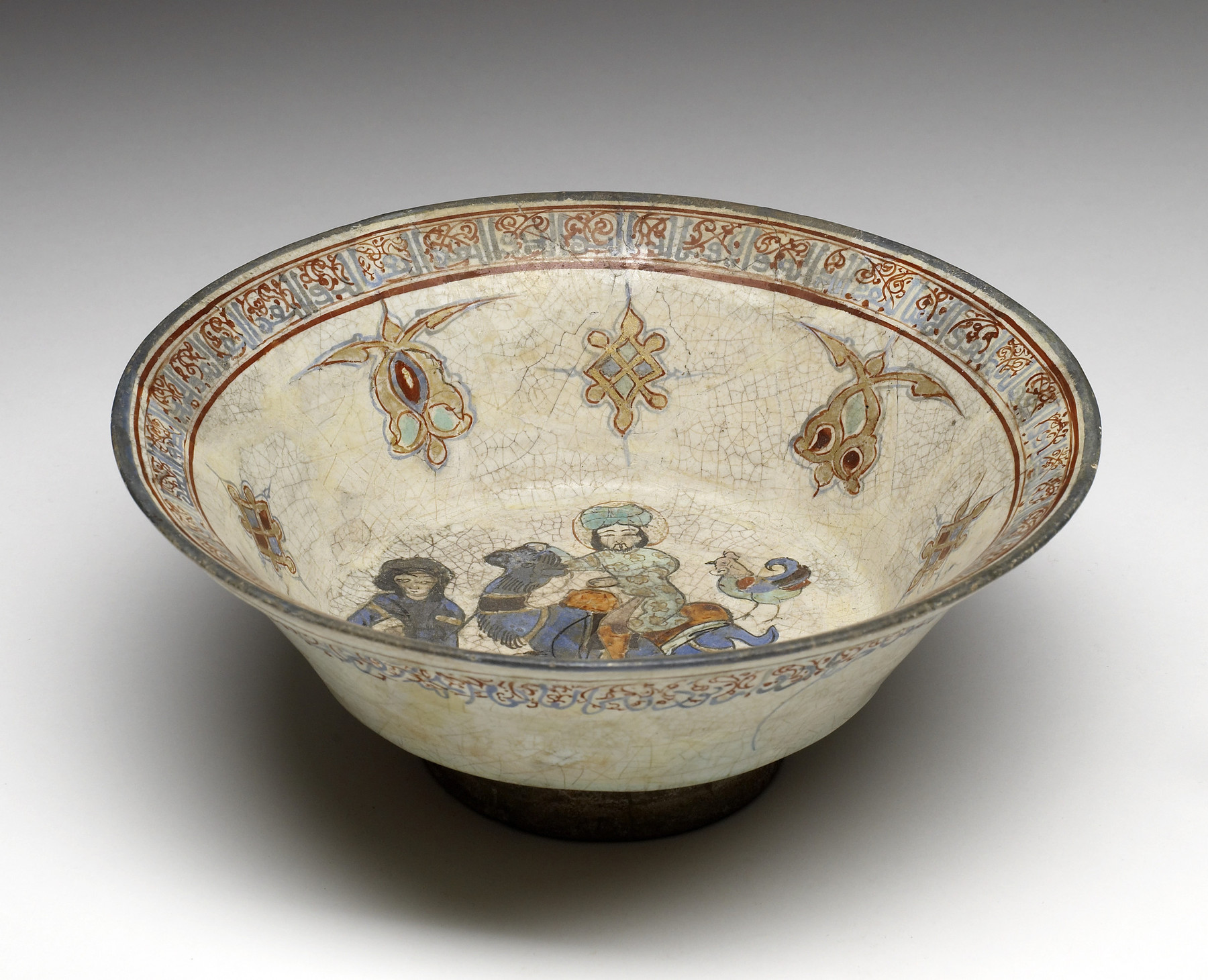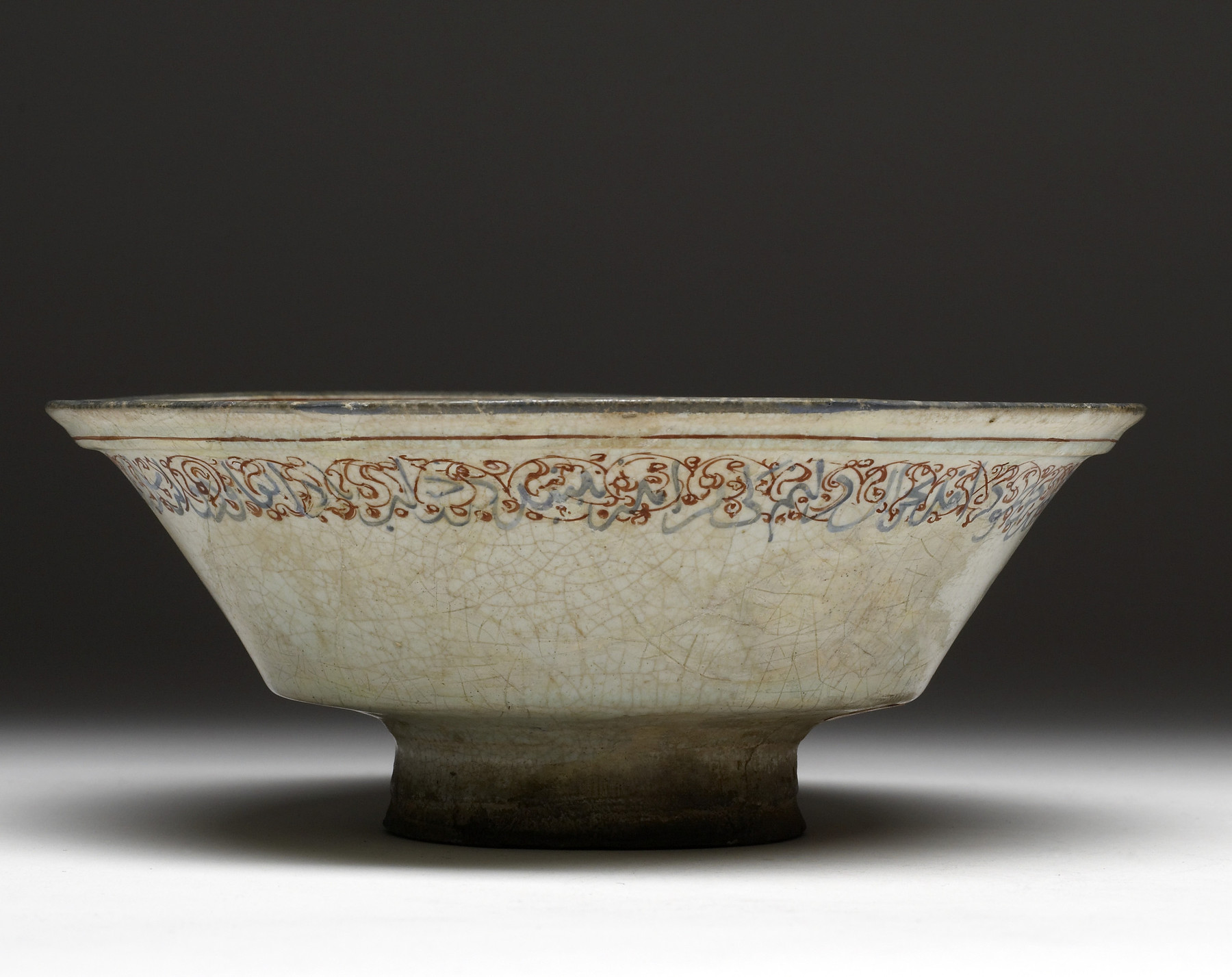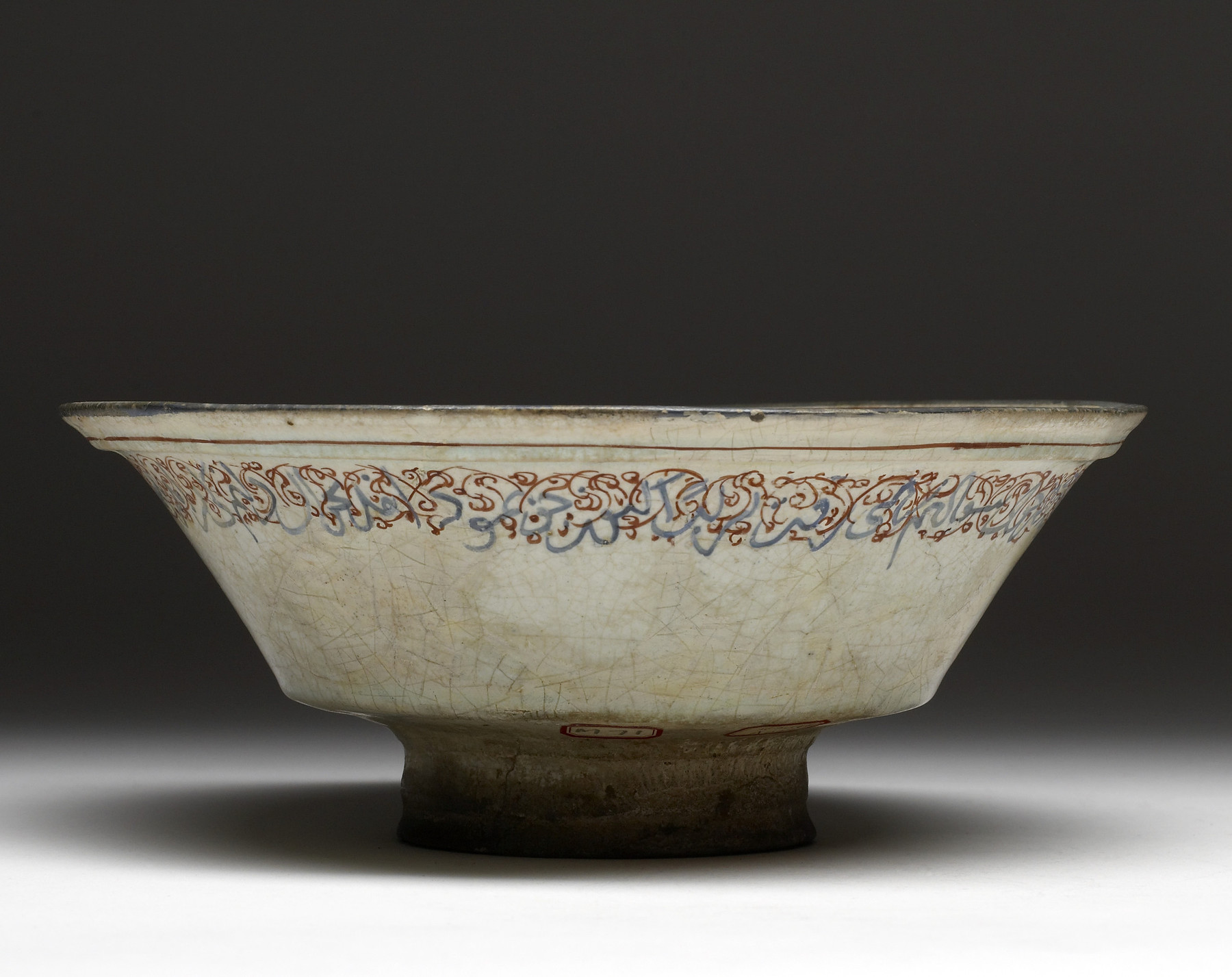Bowl with Rider on Camel
Mina’i is a modern collectors’ term for ceramics made in Iran during the late 12th to early 13th centuries. The term mina’i, translates as “enamelled” in Persian, designating the colored glass pigments used to paint detailed figural decoration on vessels or tiles, which were then fixed on the ceramic base by multiple firings. The use of a wide range of colors, including turquoise, red, green, purple, and black, also led these types of ceramics to be called by the Persian term “haft rang,” or “seven colors.”
Mina’i ware scenes often depict courtly pursuits, such as feasting, fighting, or poetry and music performances. These colorful compositions created complex narrative scenes which paralleled manuscript painting. The figure depicted at the center of this bowl appears to be of noble or courtly status, since the rider on the camel is accompanied by an attendant on foot. The kufic lettering on the inner rim seems to be a pseudo-inscription, while the naskhi inscription on the outside is legible.
Provenance
Provenance (from the French provenir, 'to come from/forth') is the chronology of the ownership, custody, or location of a historical object. Learn more about provenance at the Walters.
Henry Walters, Baltimore, [date and mode of acquisition unknown]; Walters Art Museum, 1931, by bequest.
Exhibitions
| 2005-2006 | Things With Wings: Mythological Figures in Ancient Greek Art. The Walters Art Museum, Baltimore. |
Geographies
Iran (Place of Origin)
Measurements
Overall: 3 3/8 x 8 5/16 in. (8.6 x 21.1 cm)
Credit Line
Acquired by Henry Walters, by 1931
Location in Museum
Not on view
Accession Number
In libraries, galleries, museums, and archives, an accession number is a unique identifier assigned to each object in the collection.
In libraries, galleries, museums, and archives, an accession number is a unique identifier assigned to each object in the collection.
48.1037














